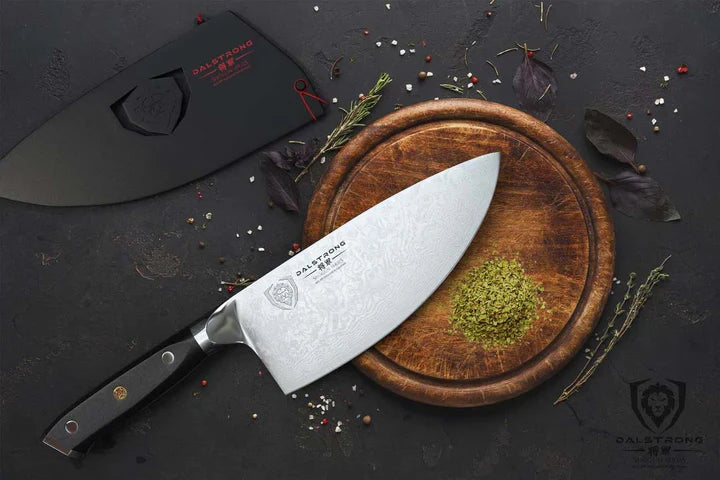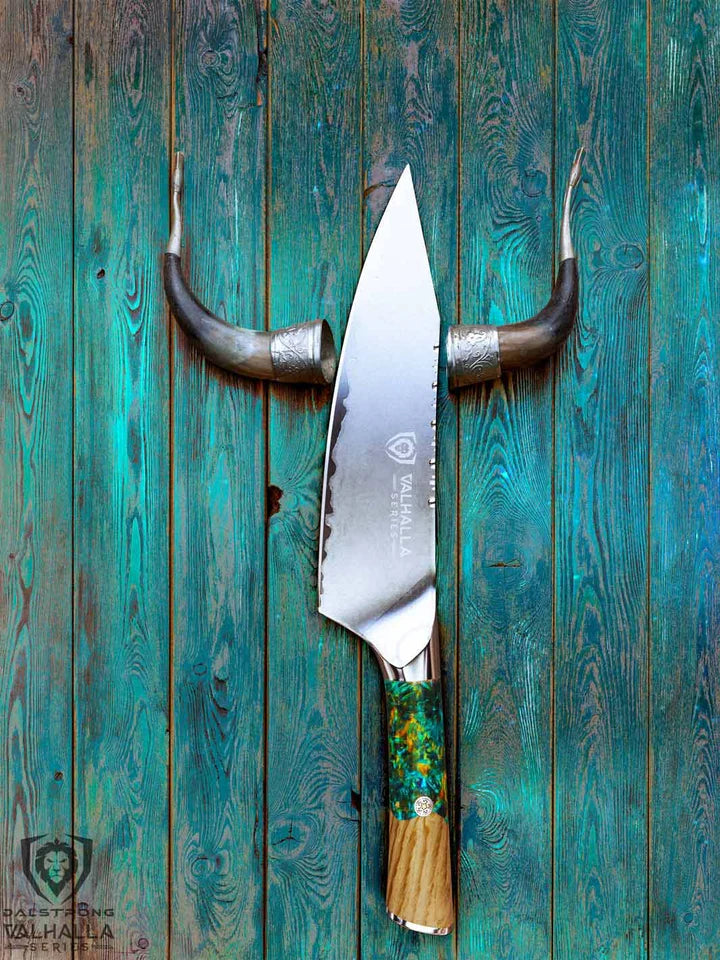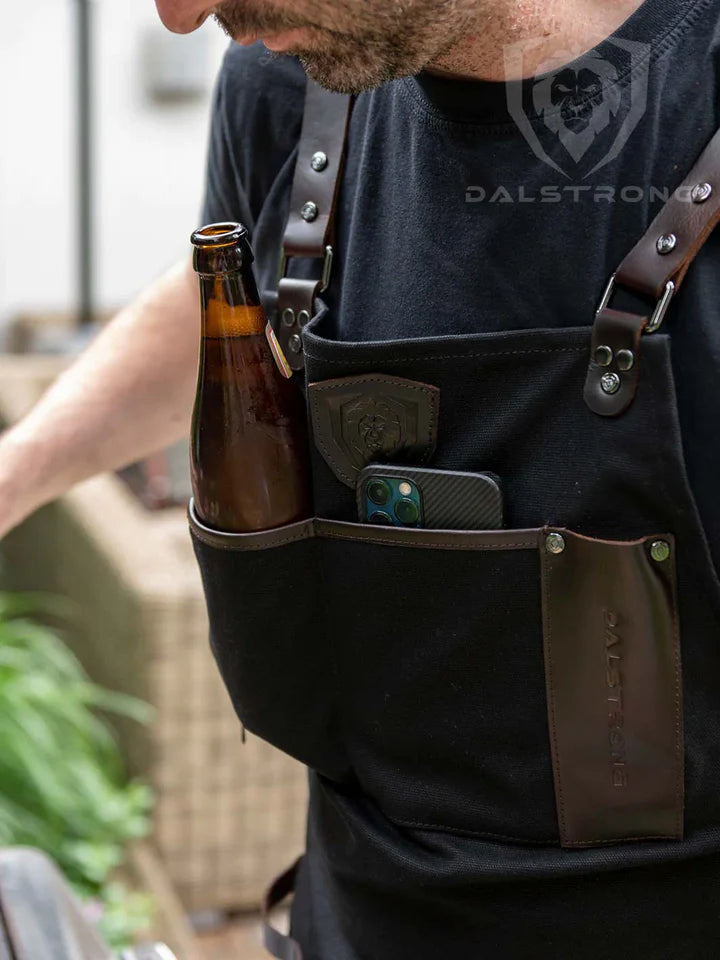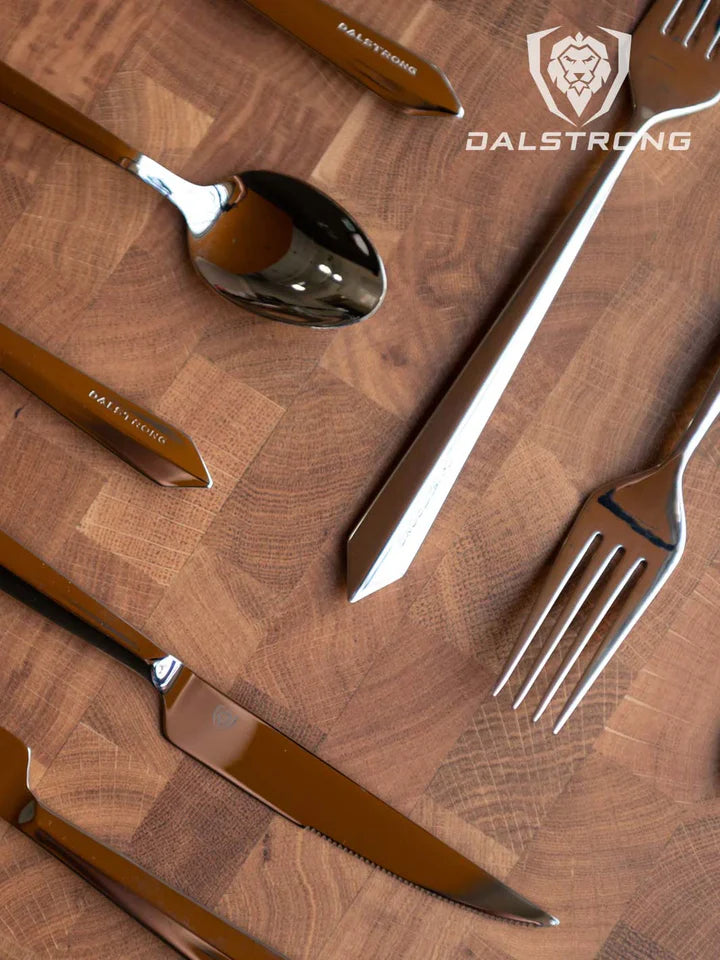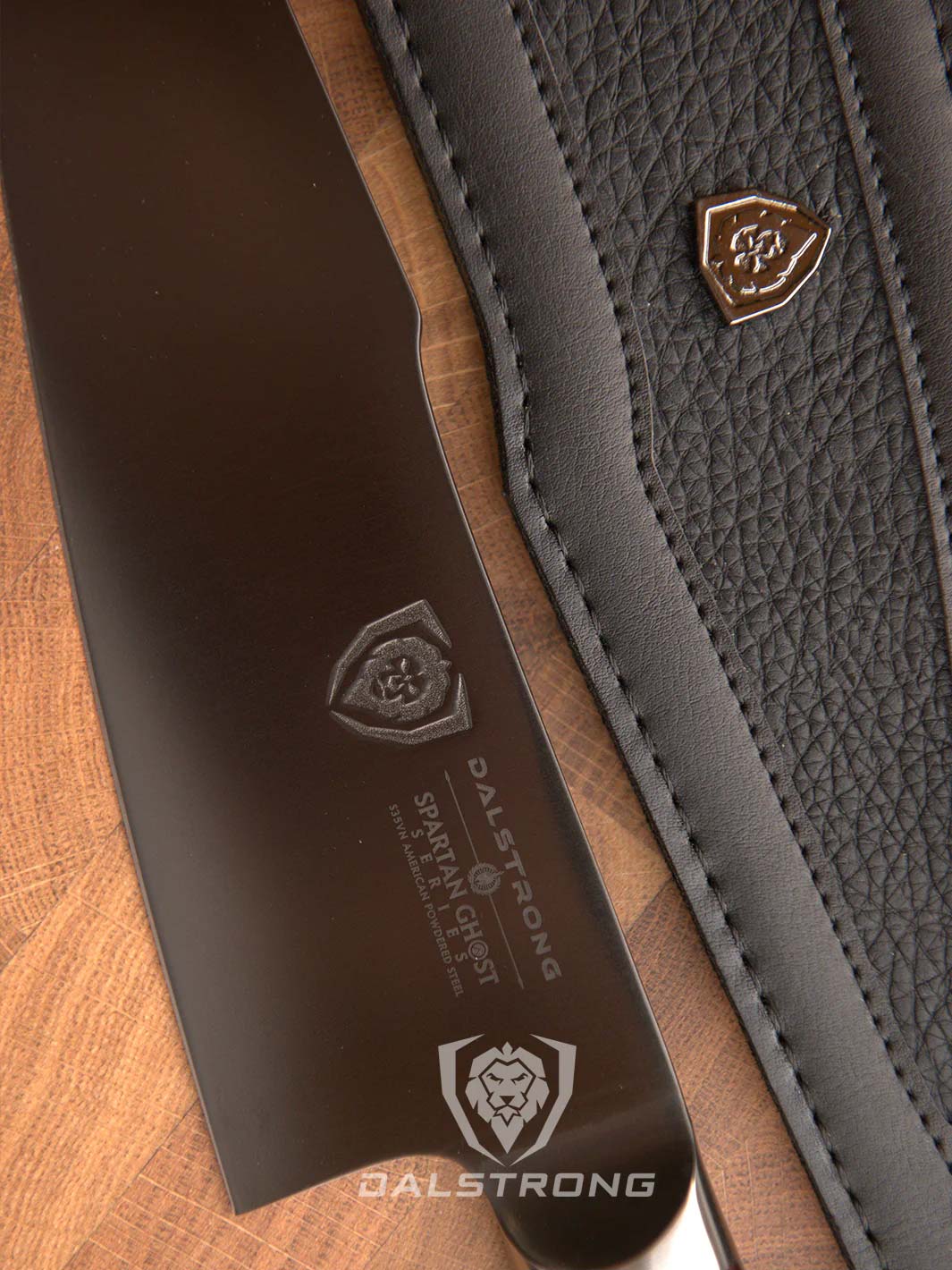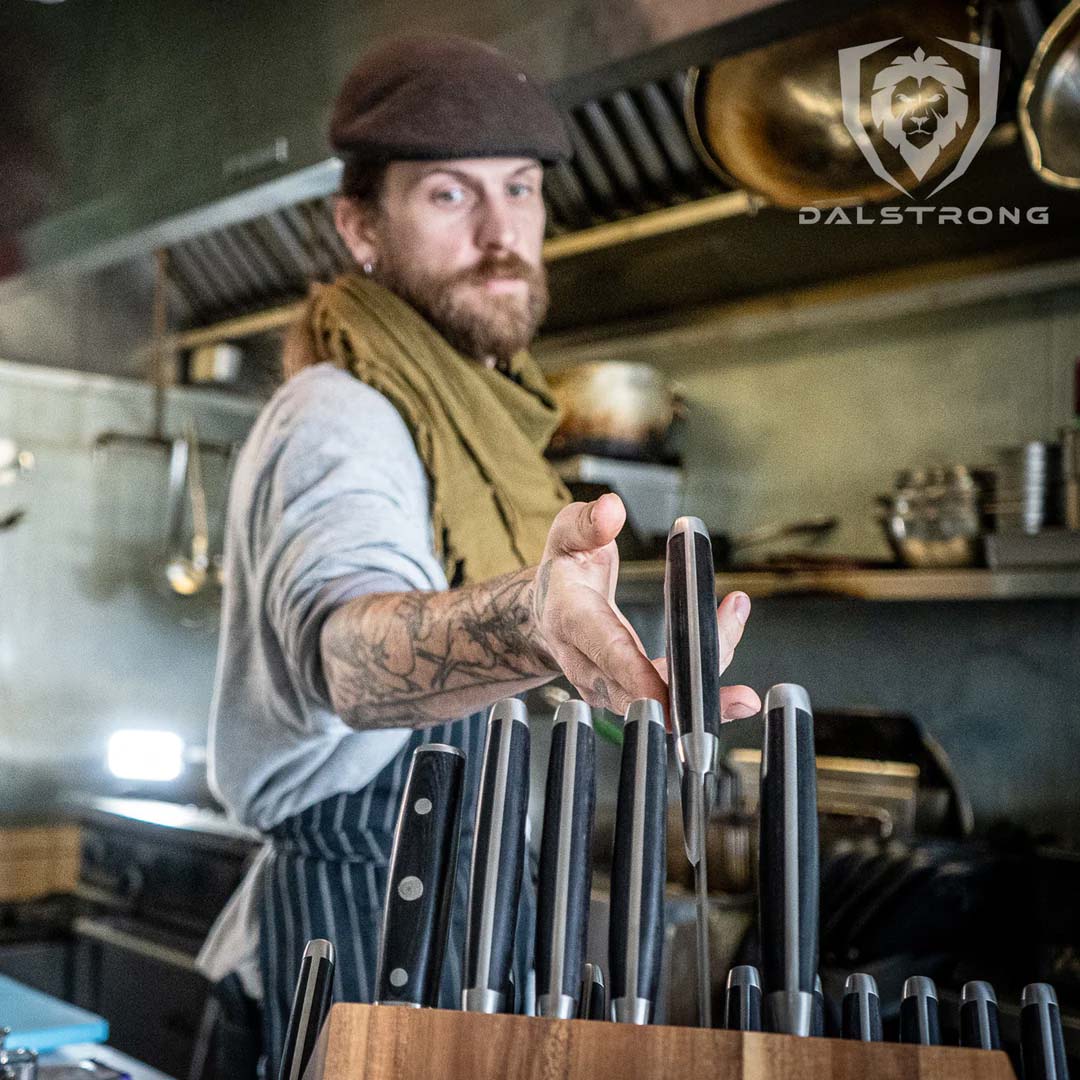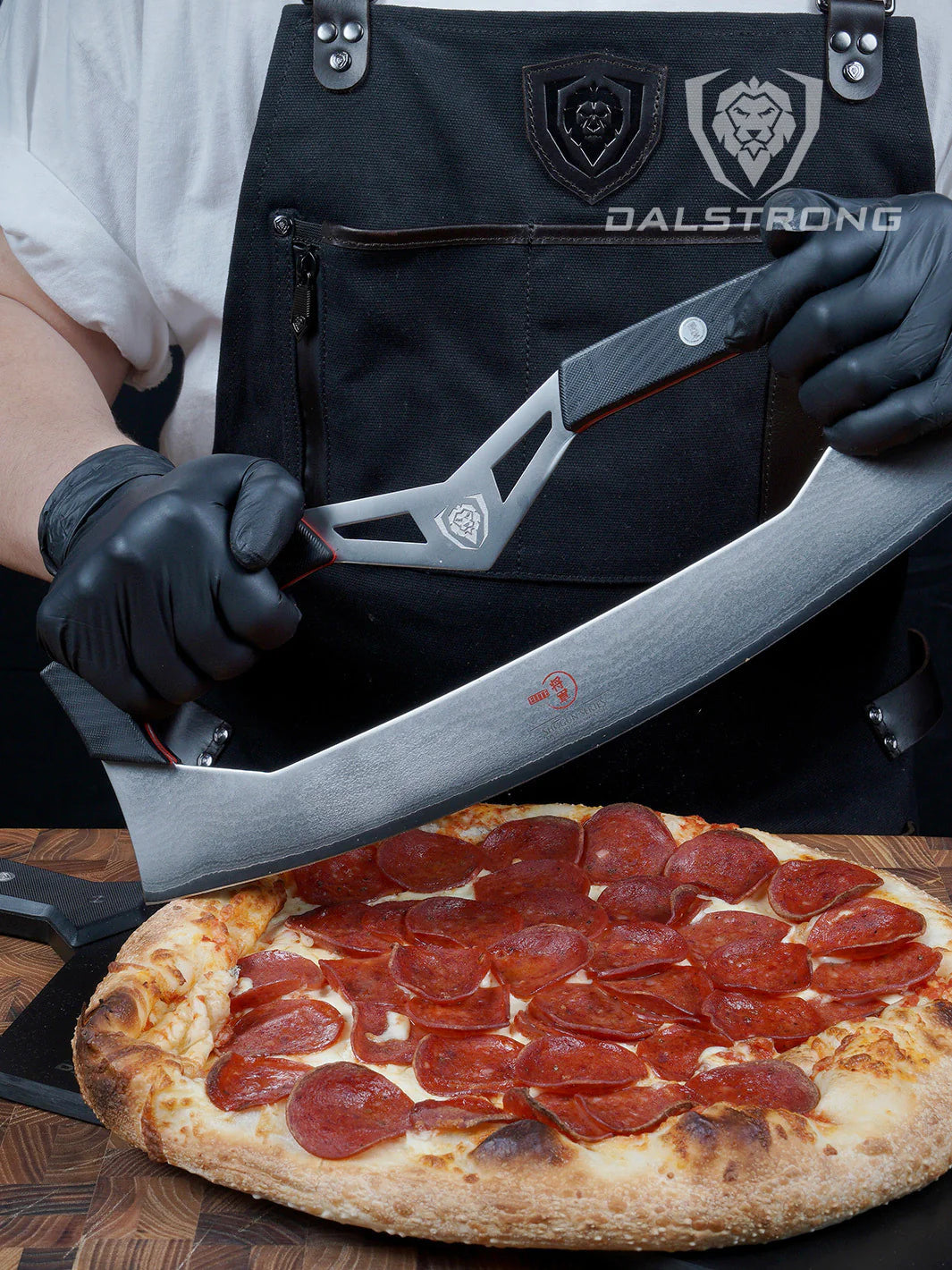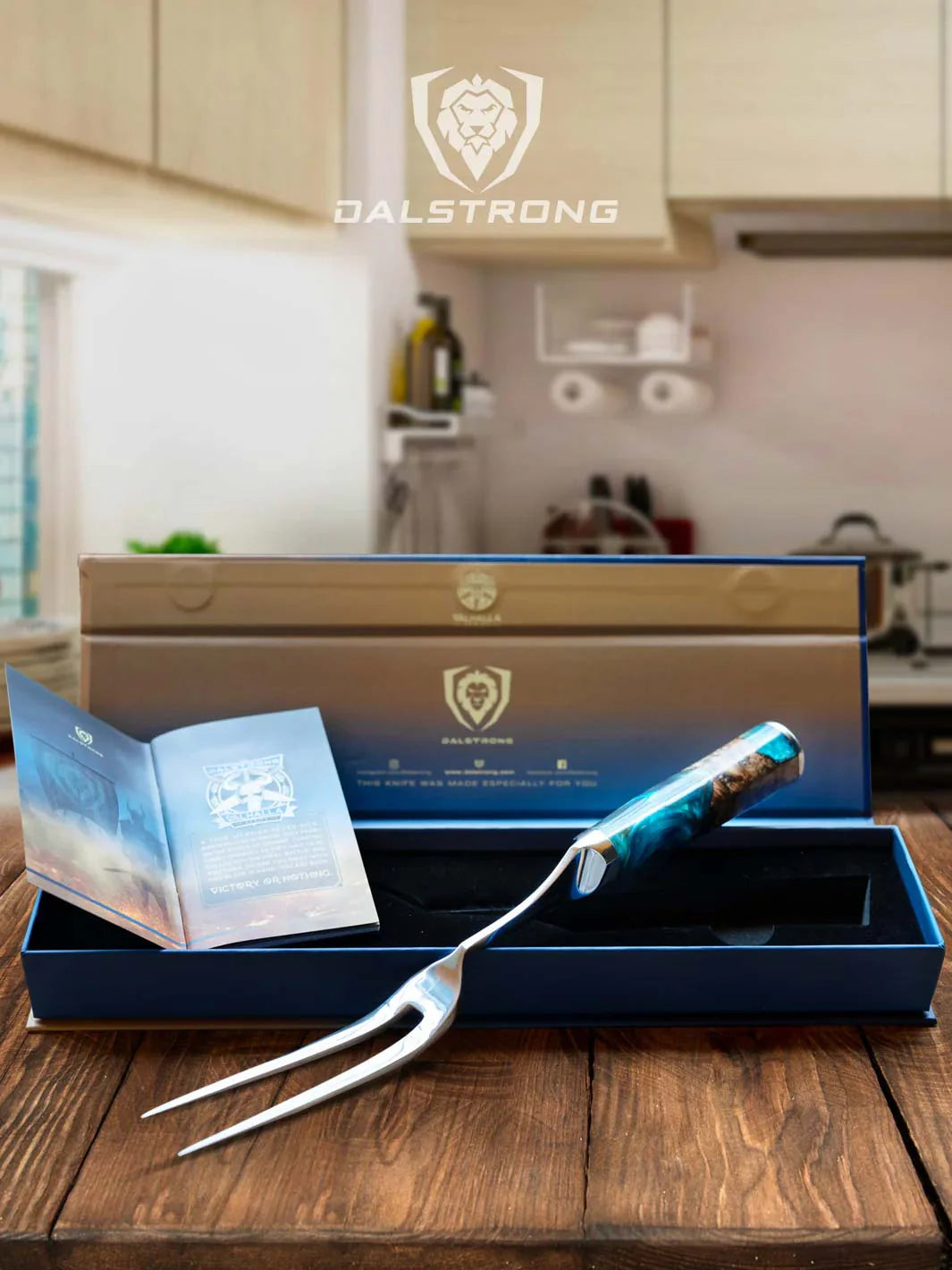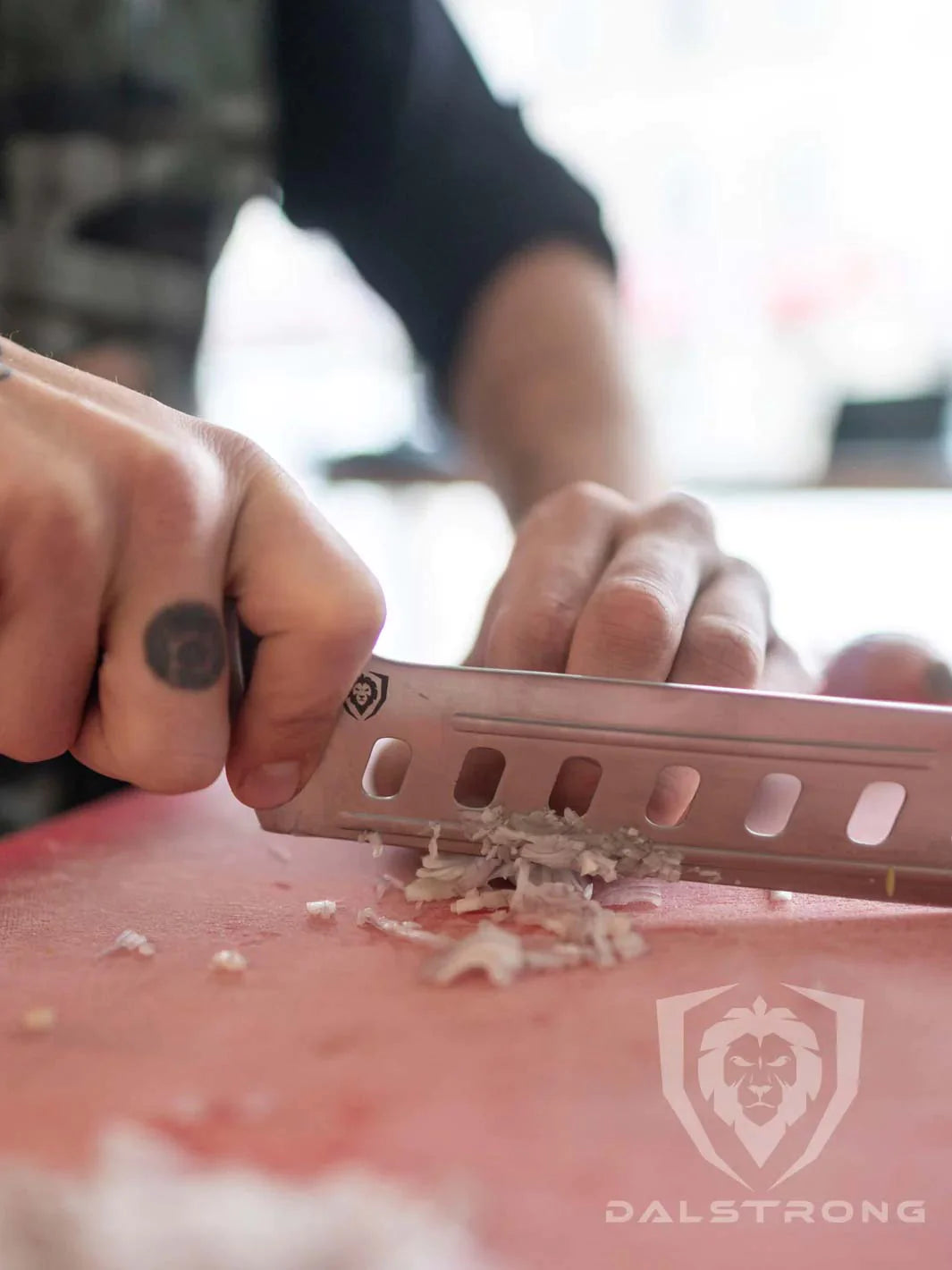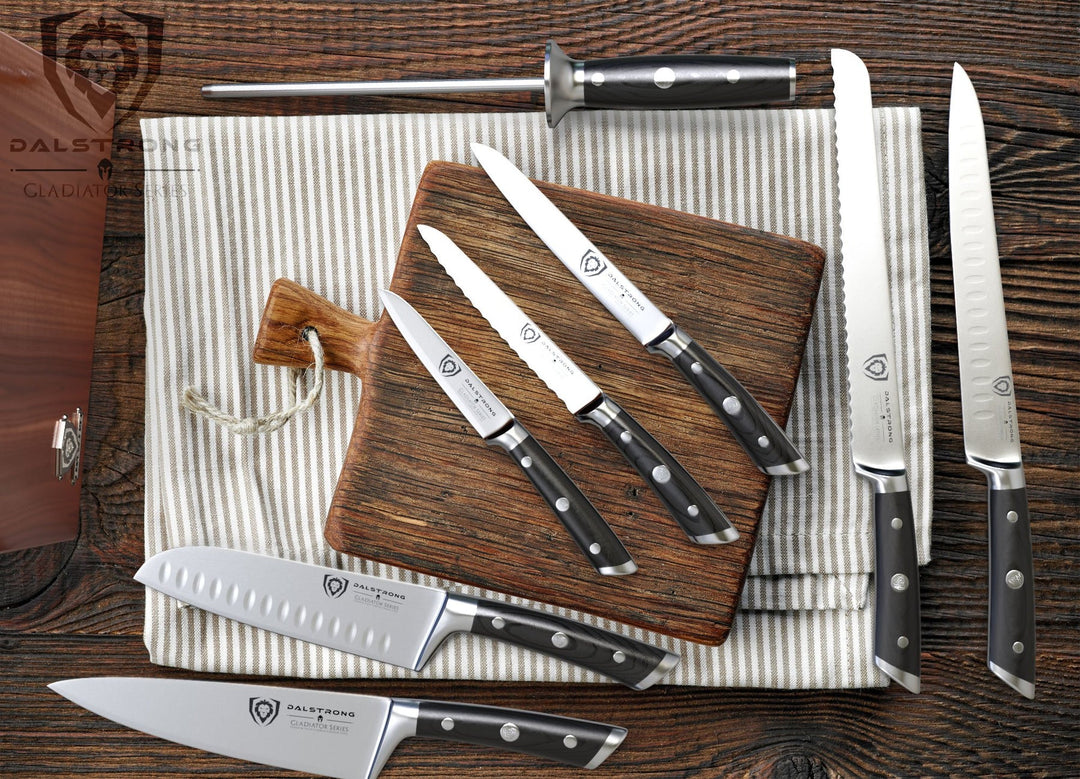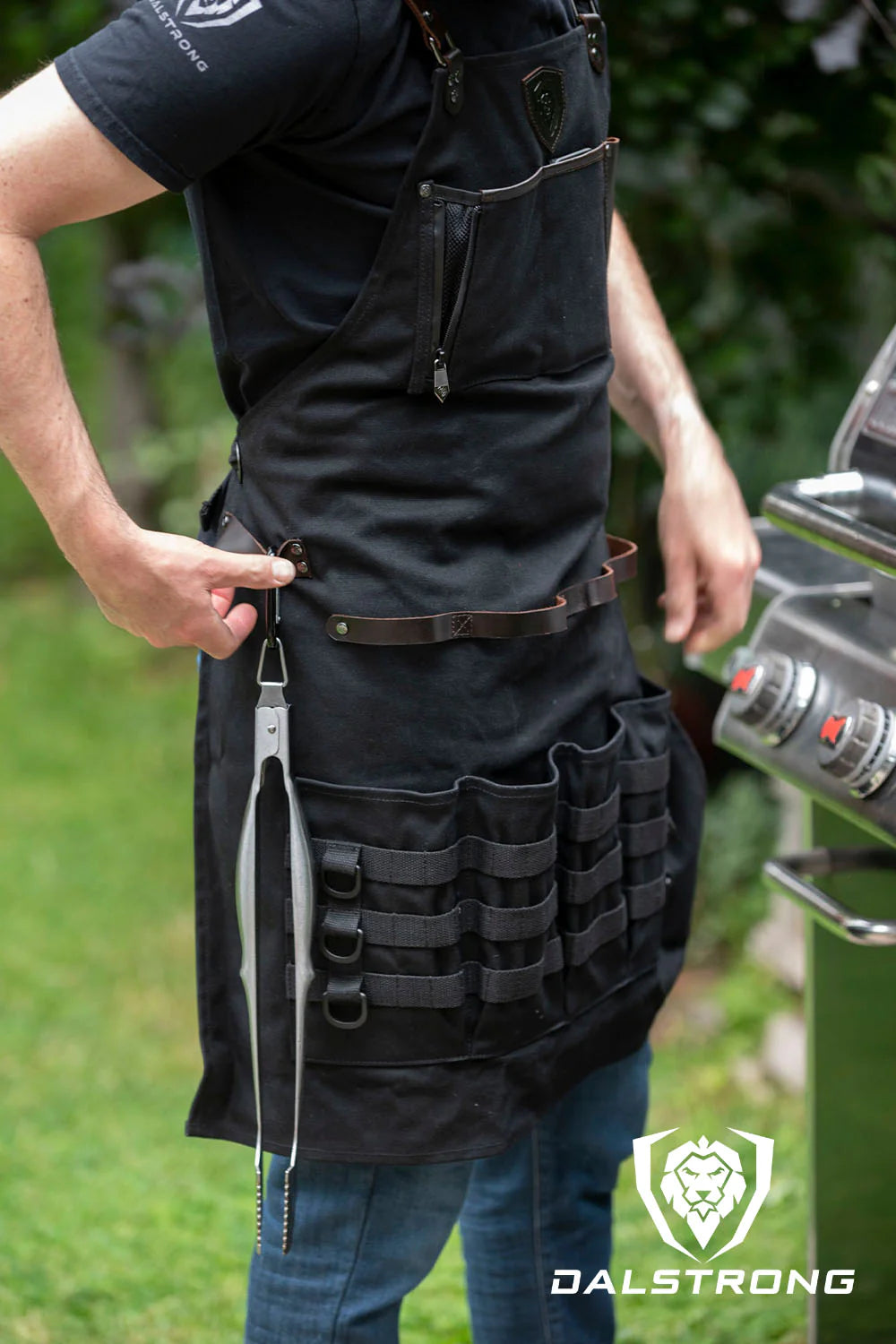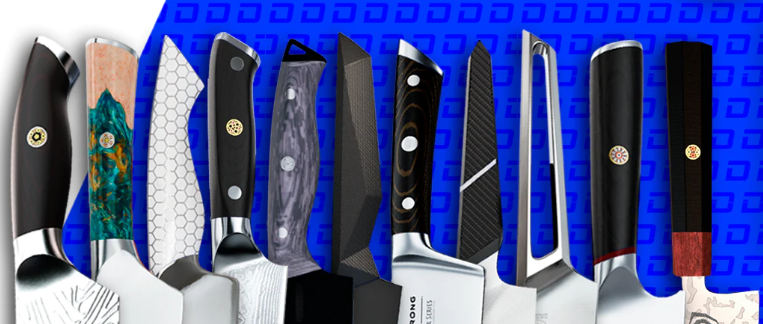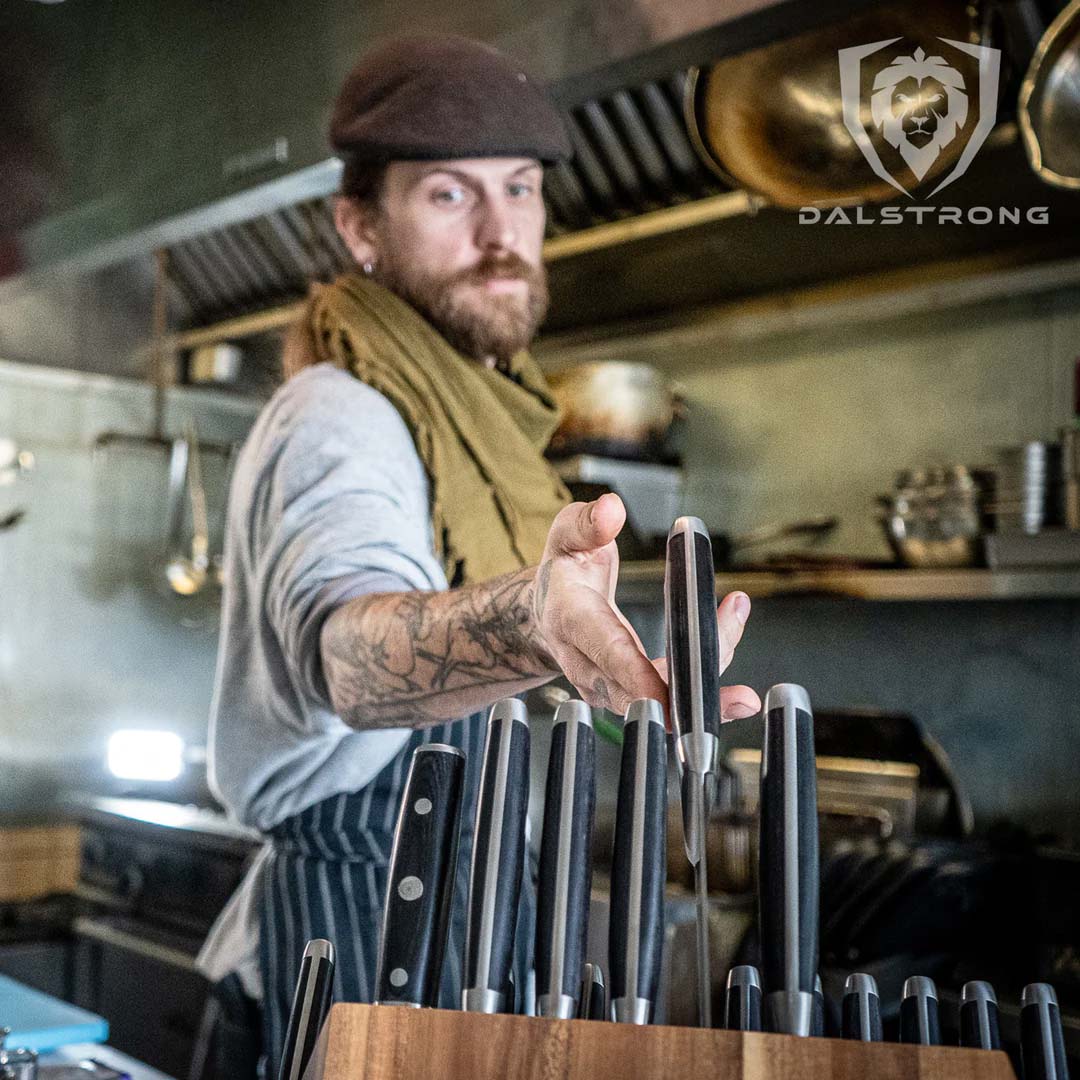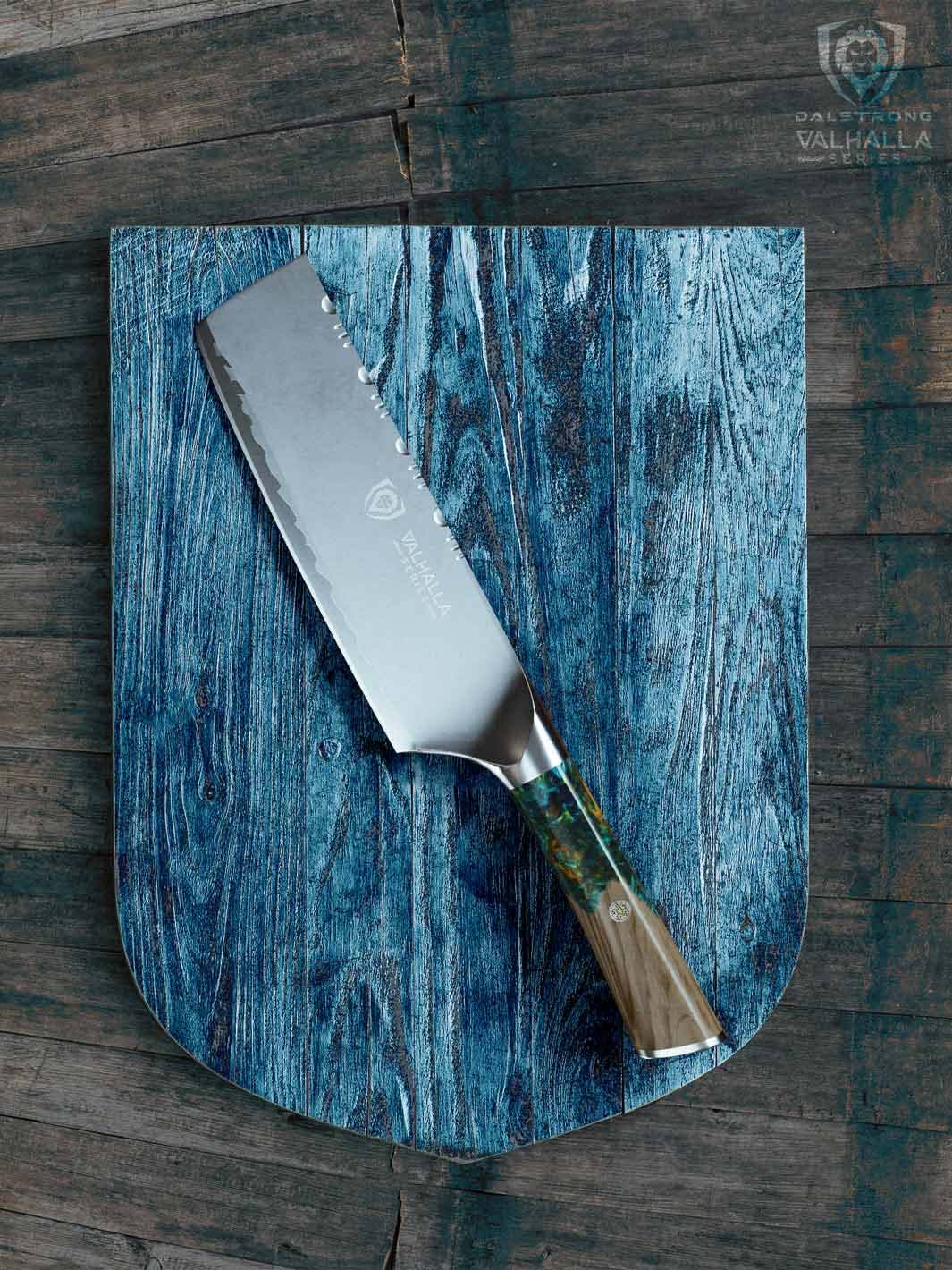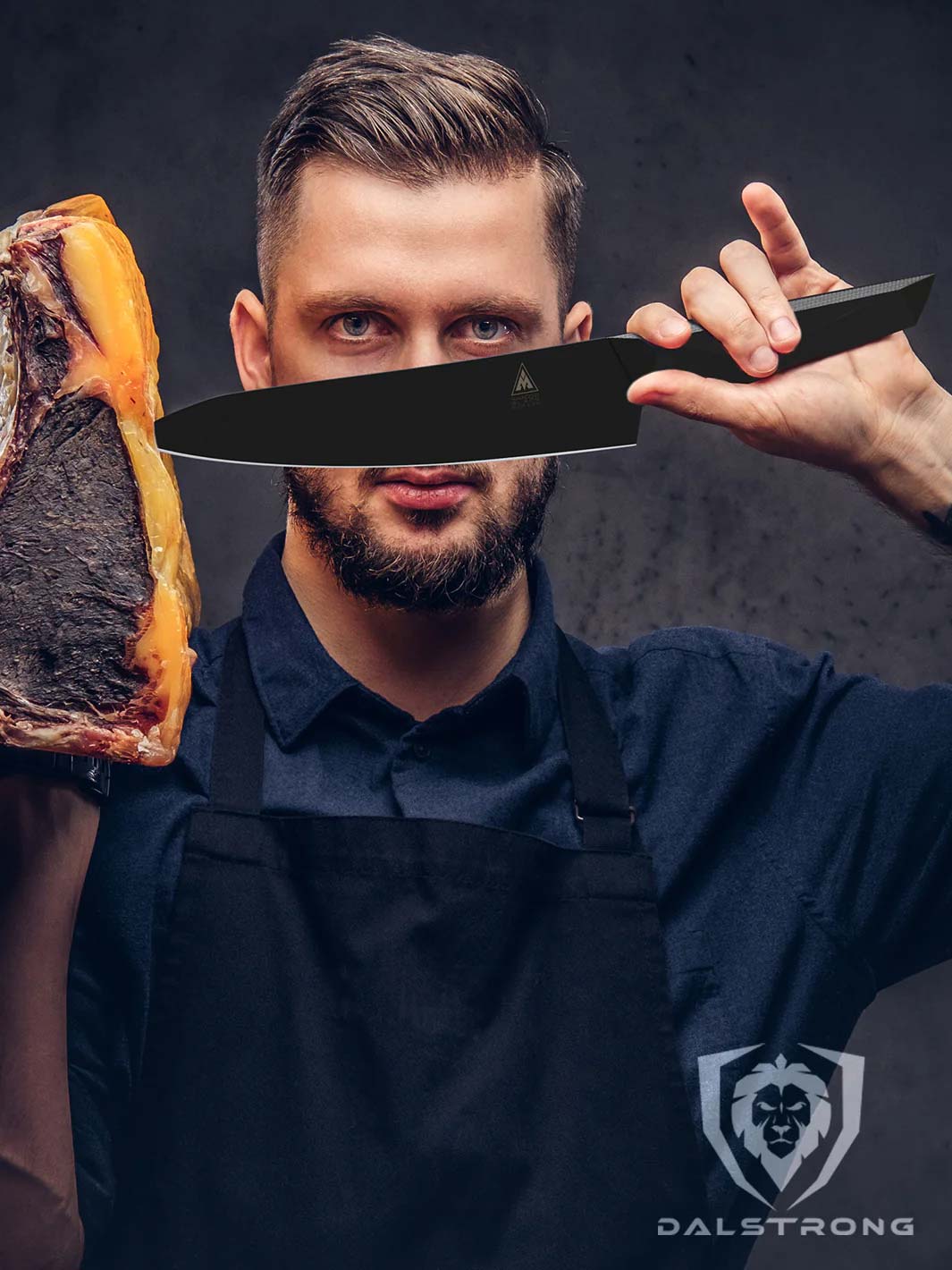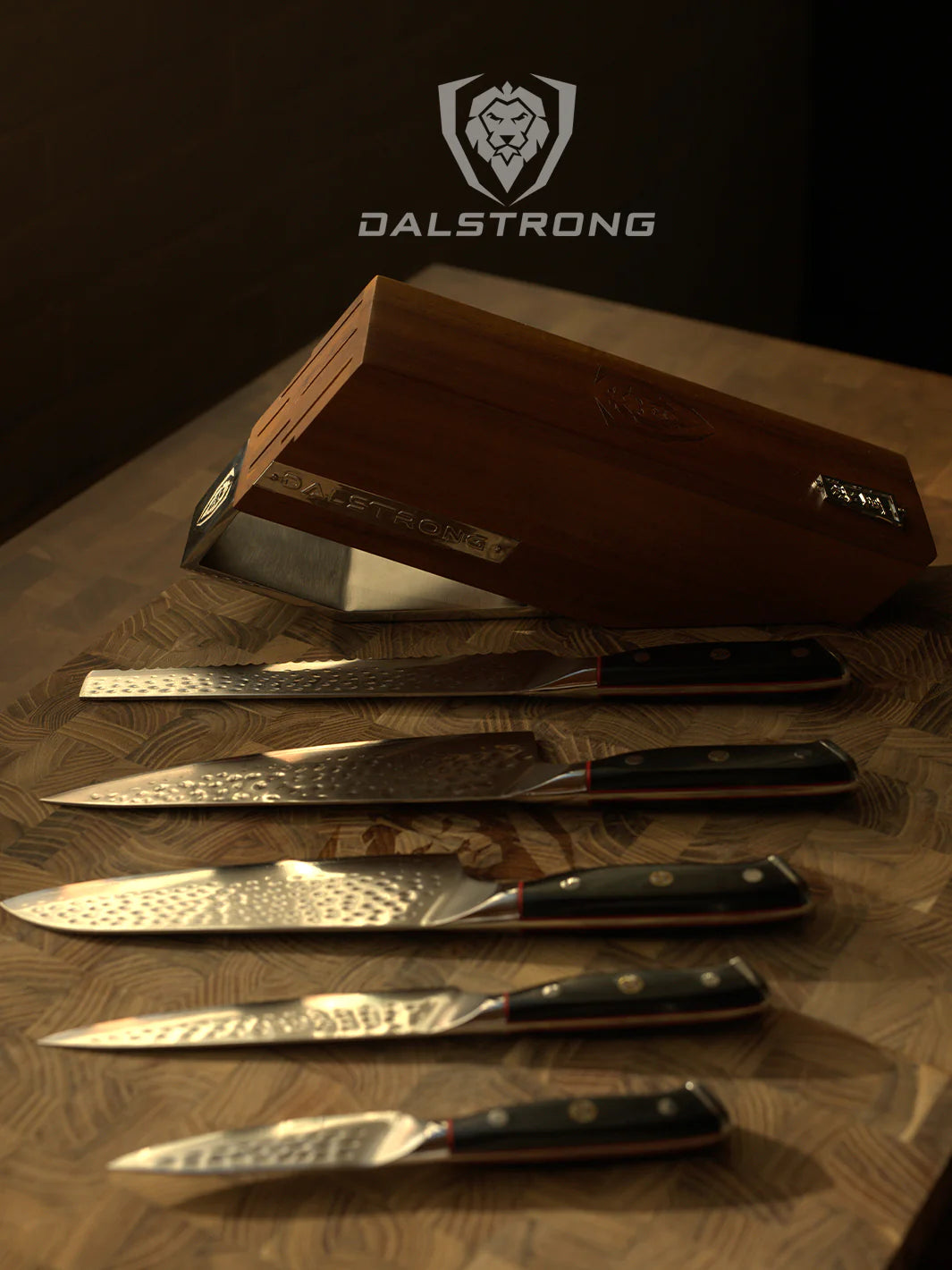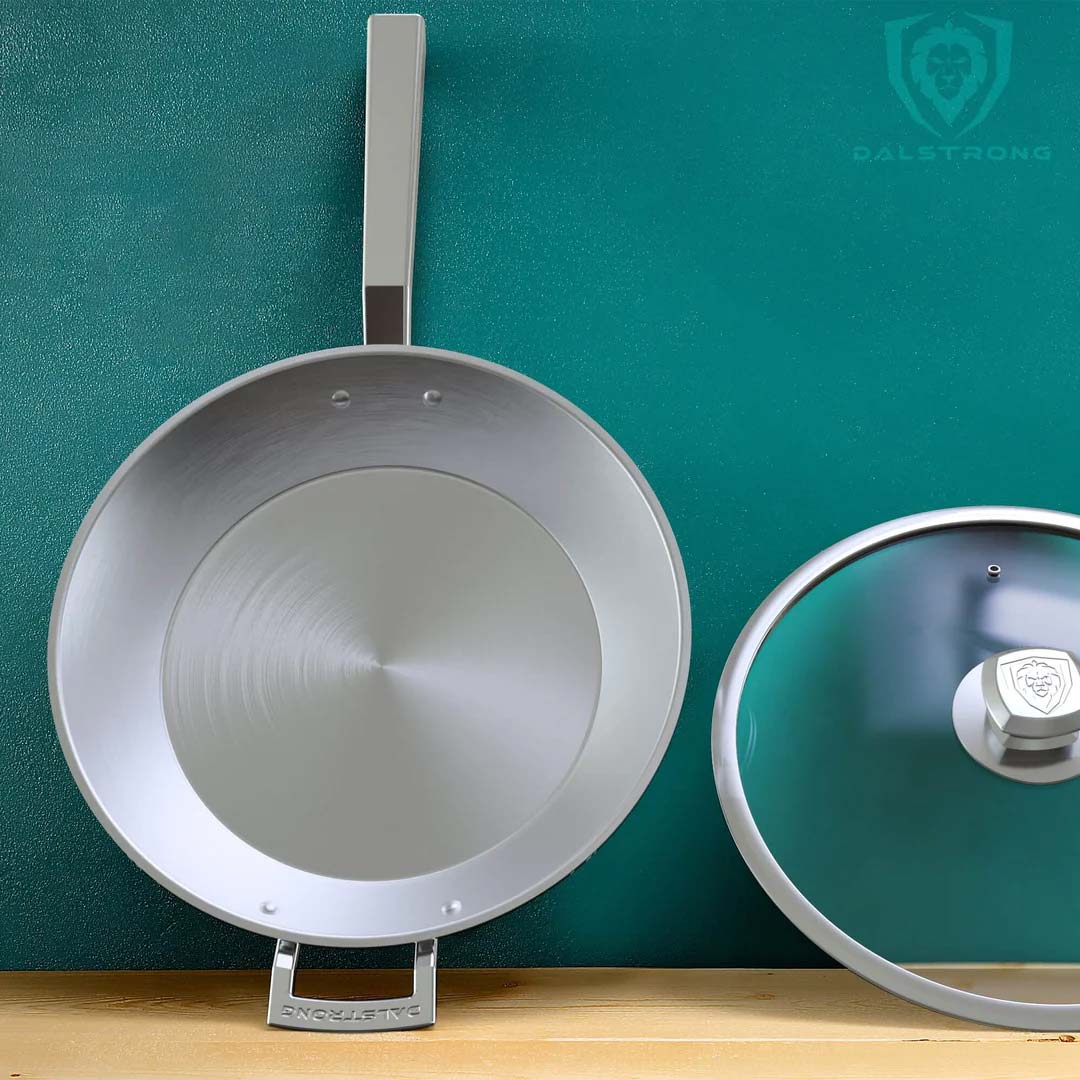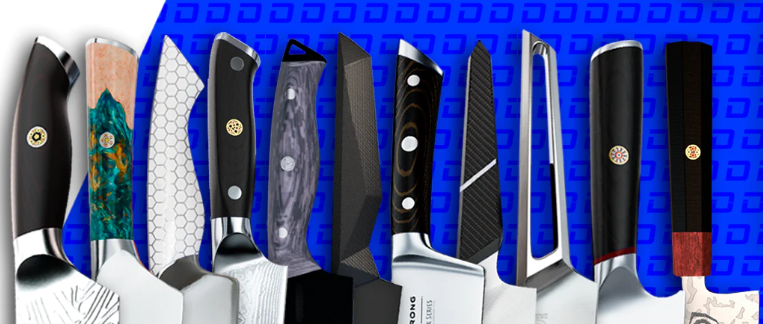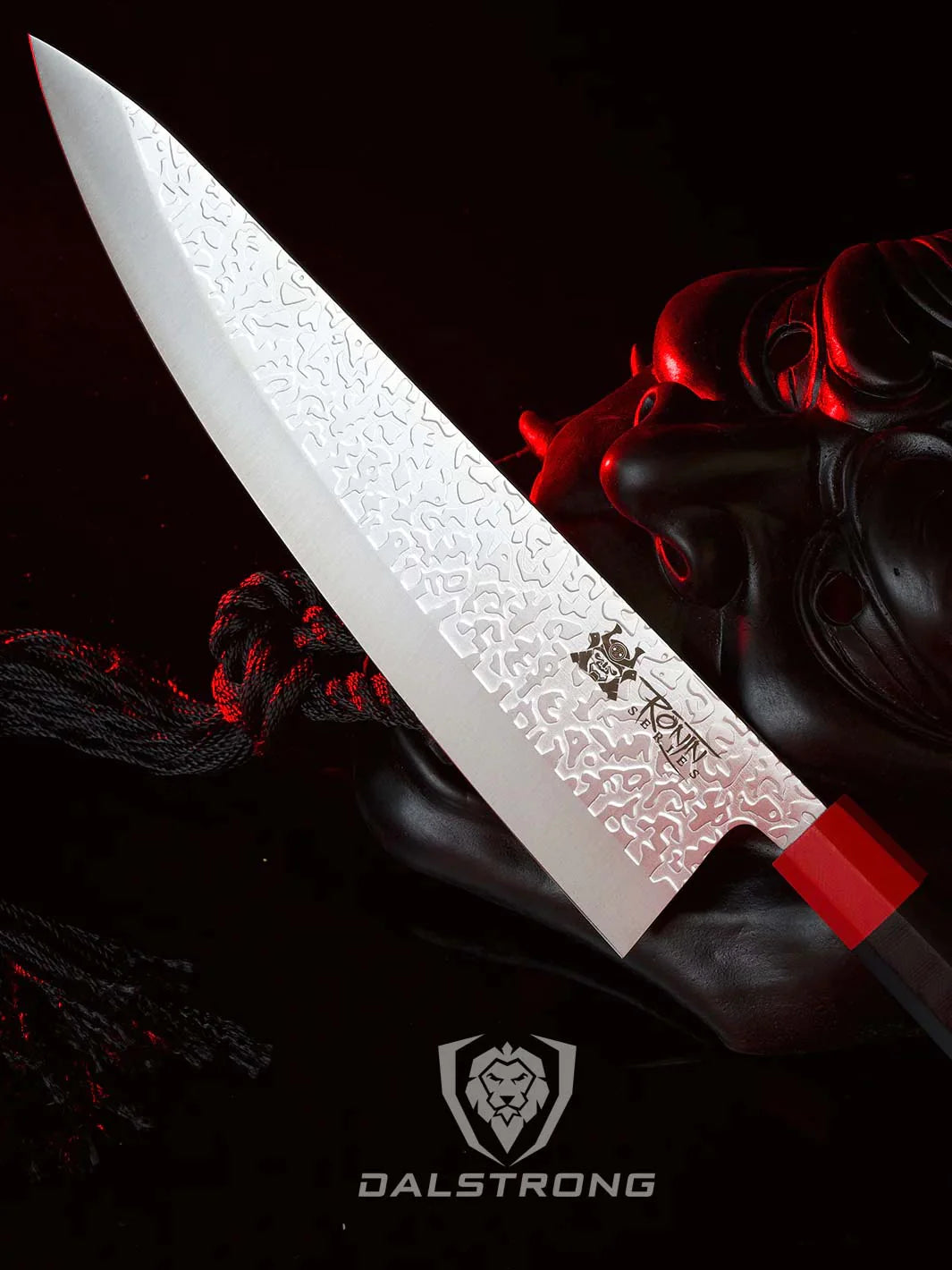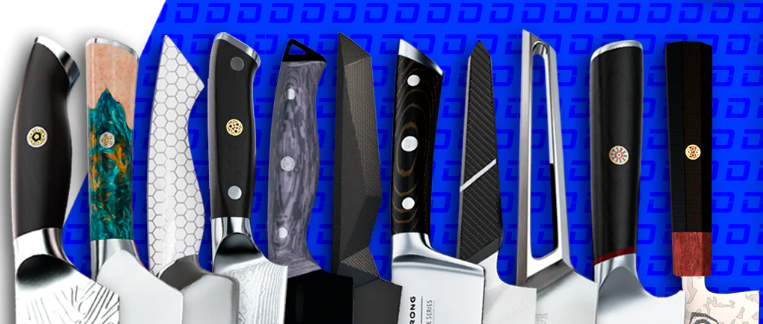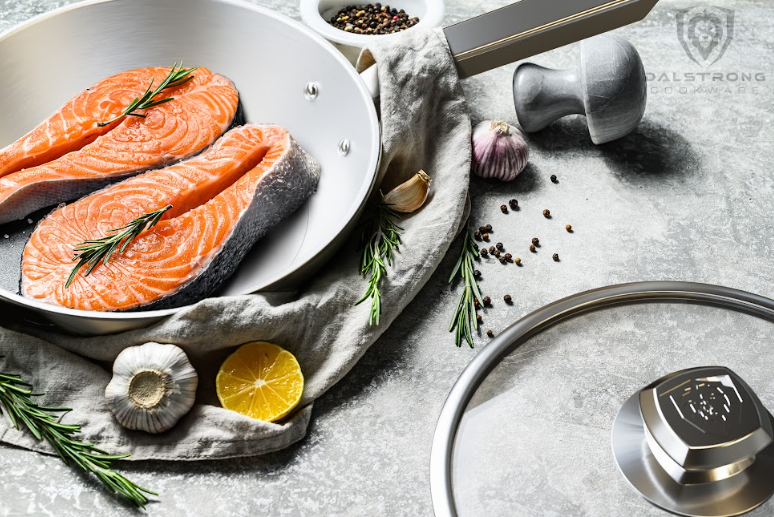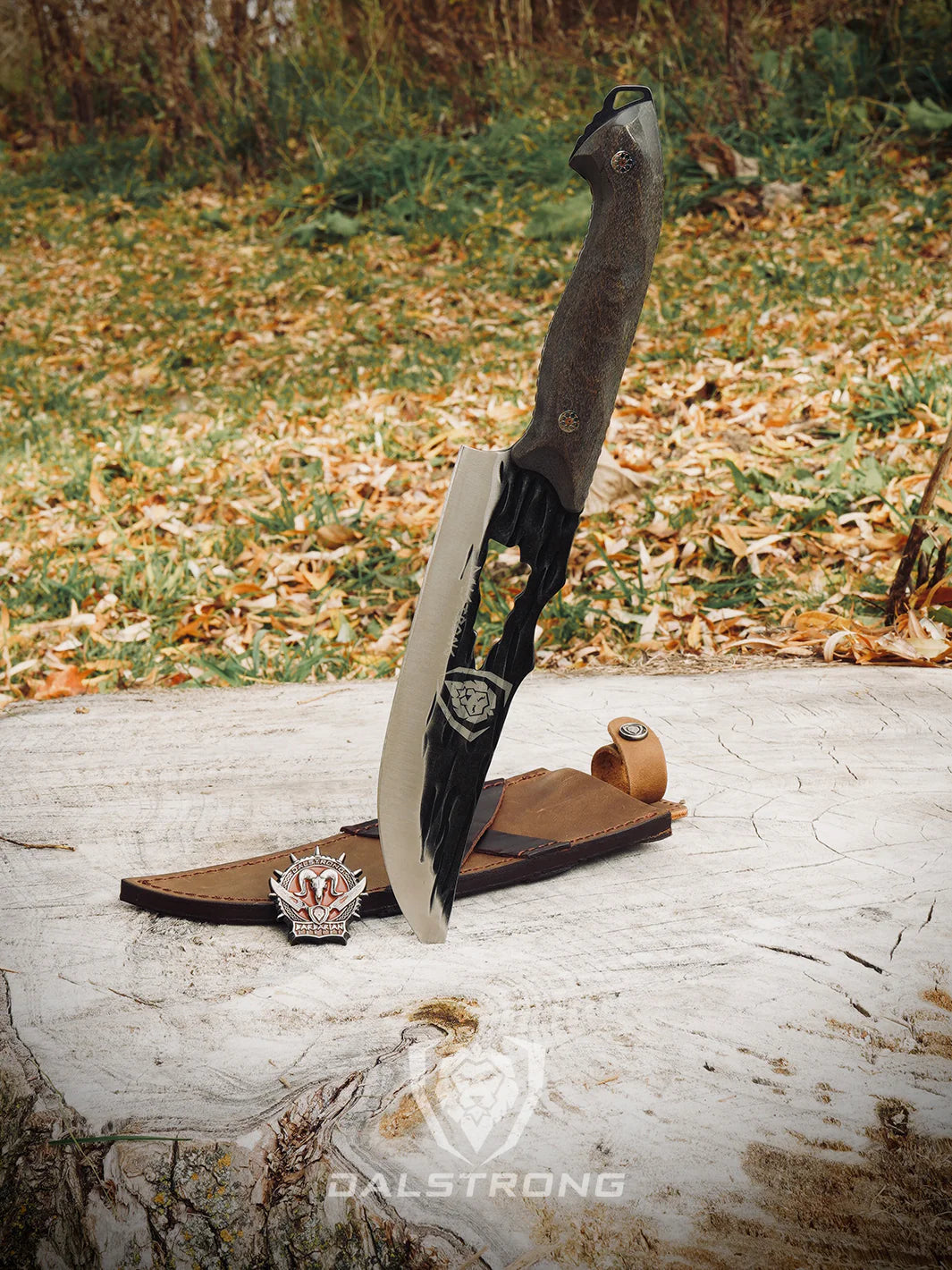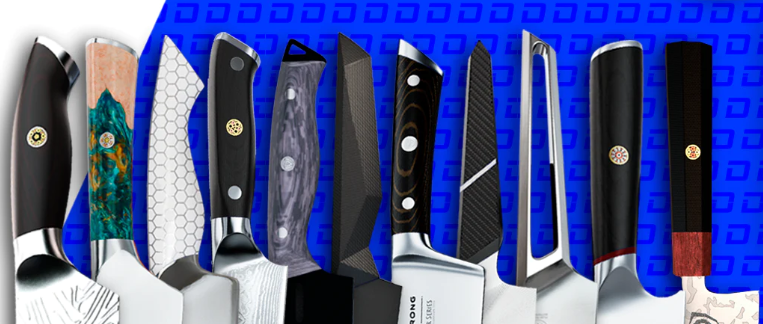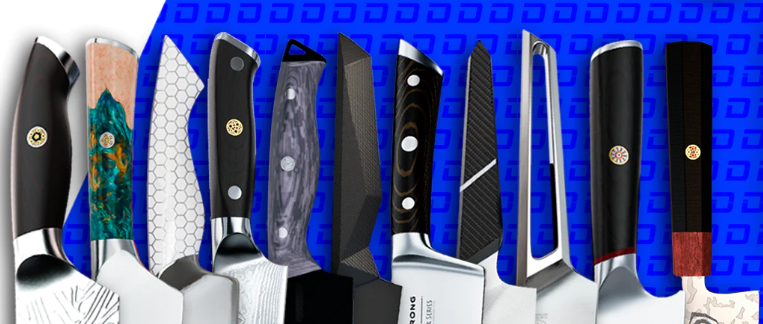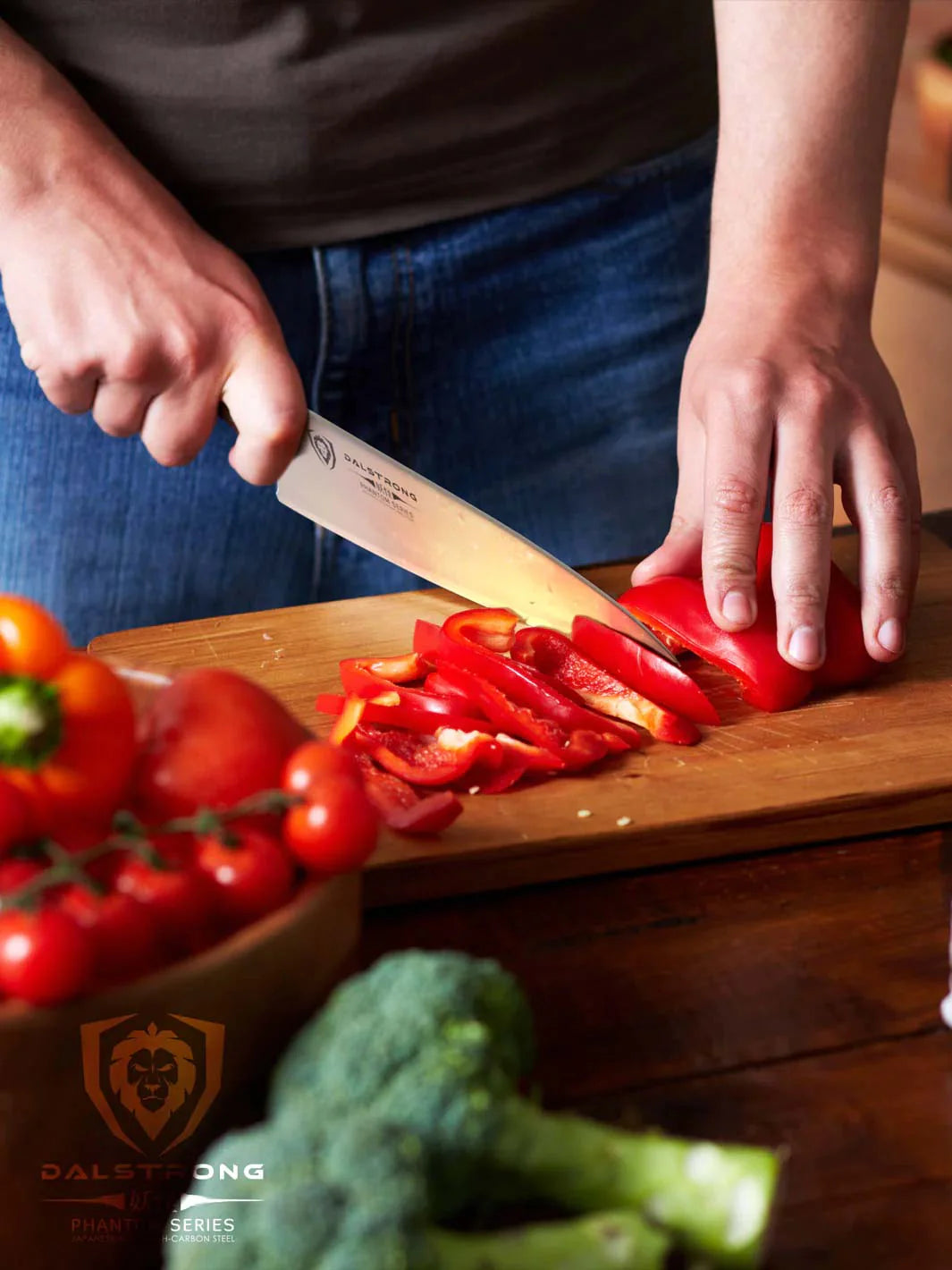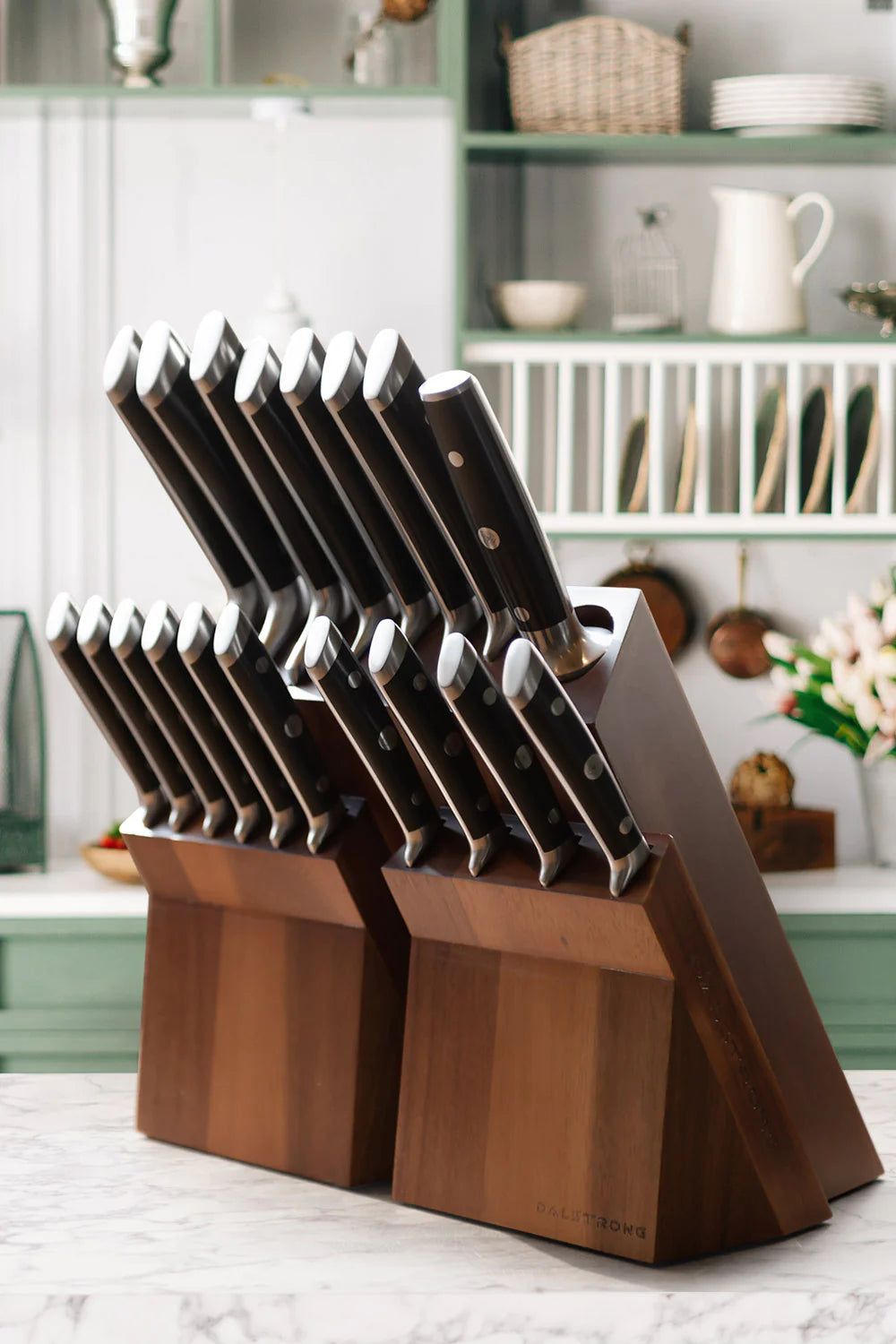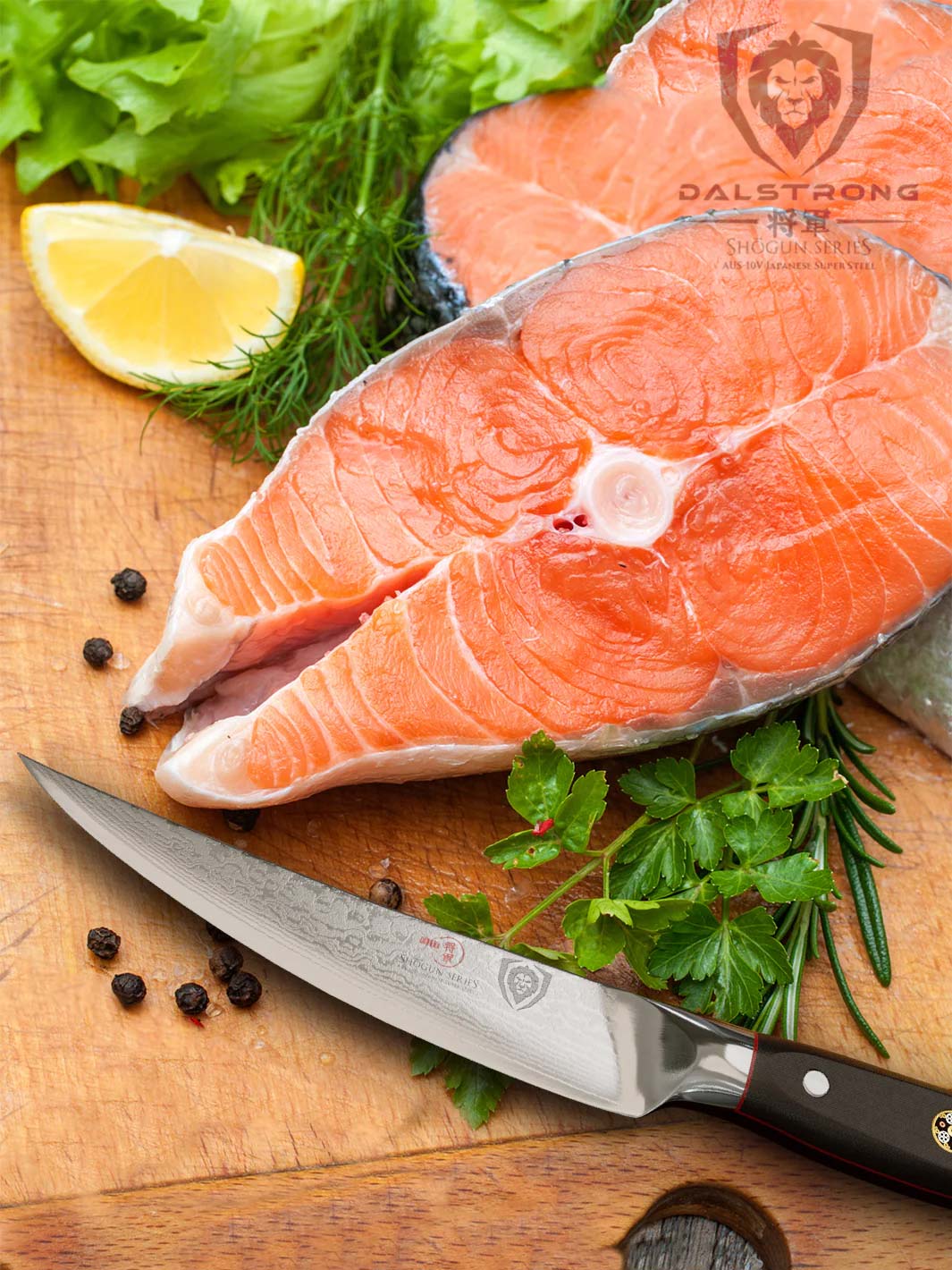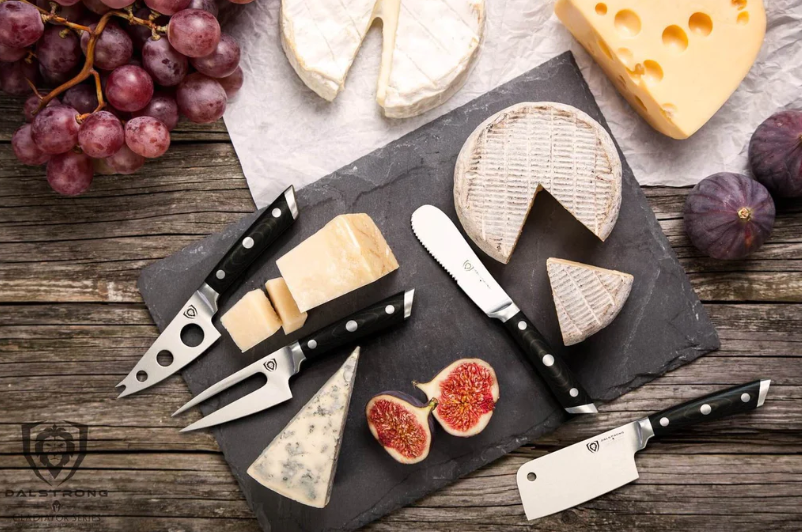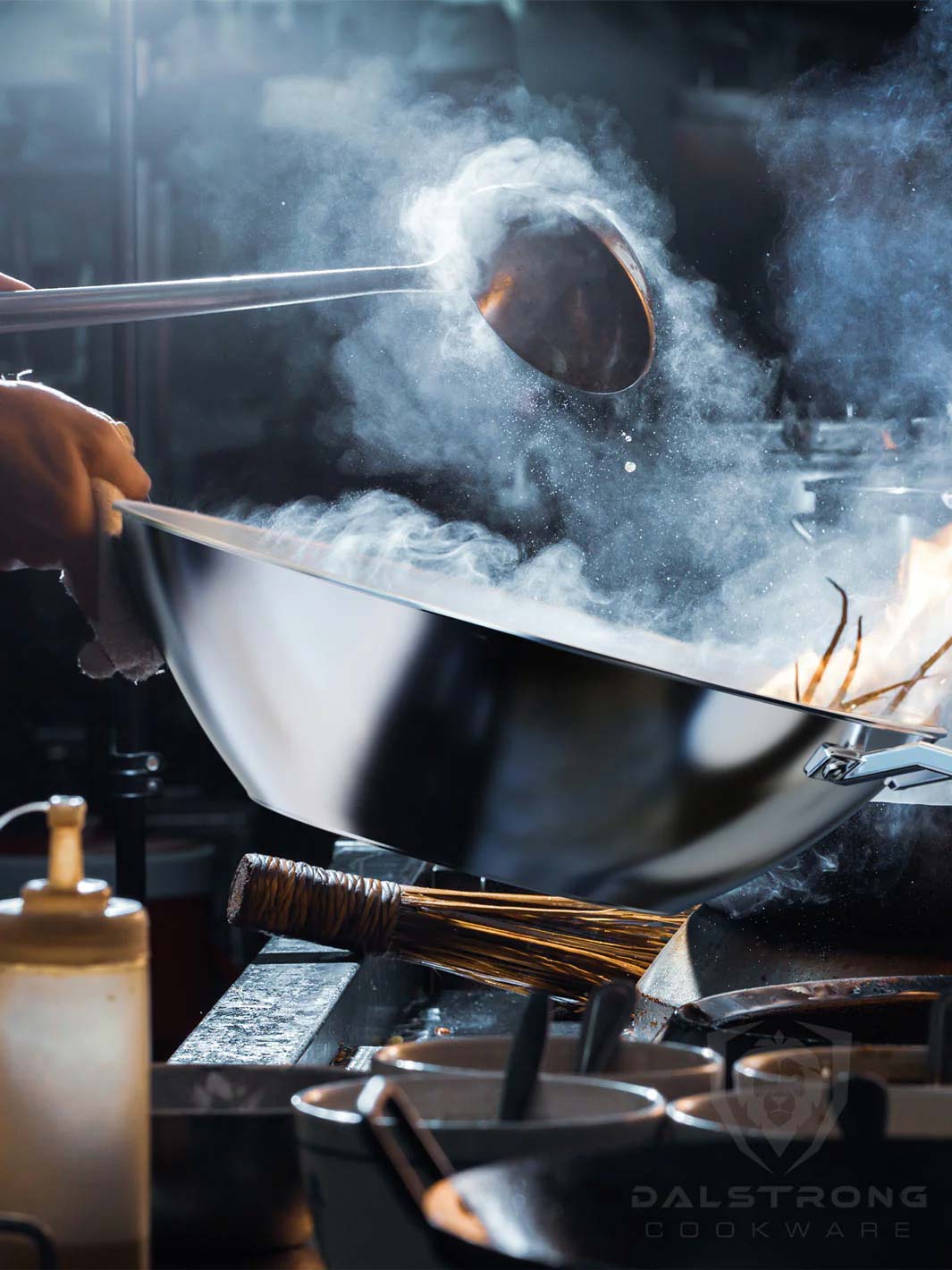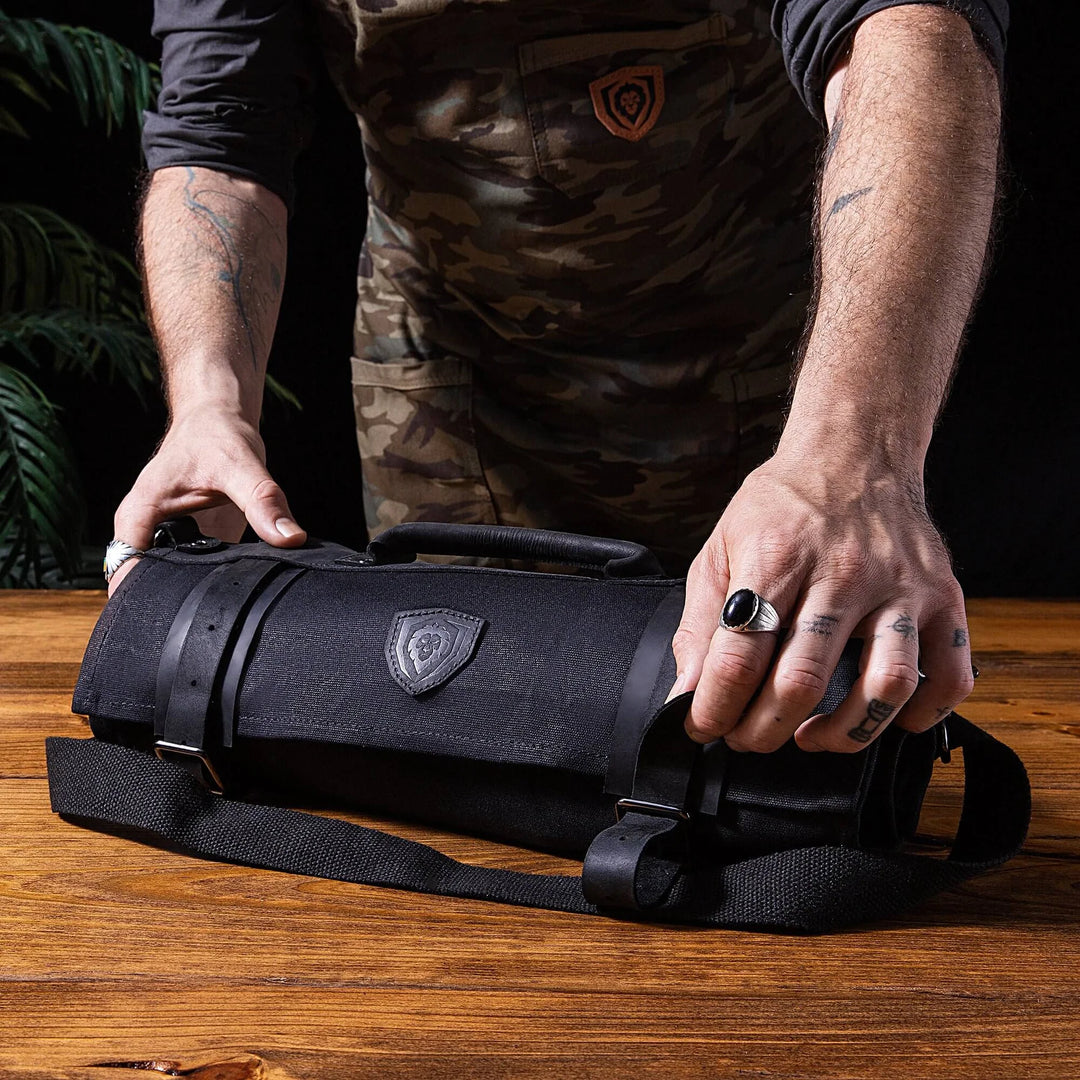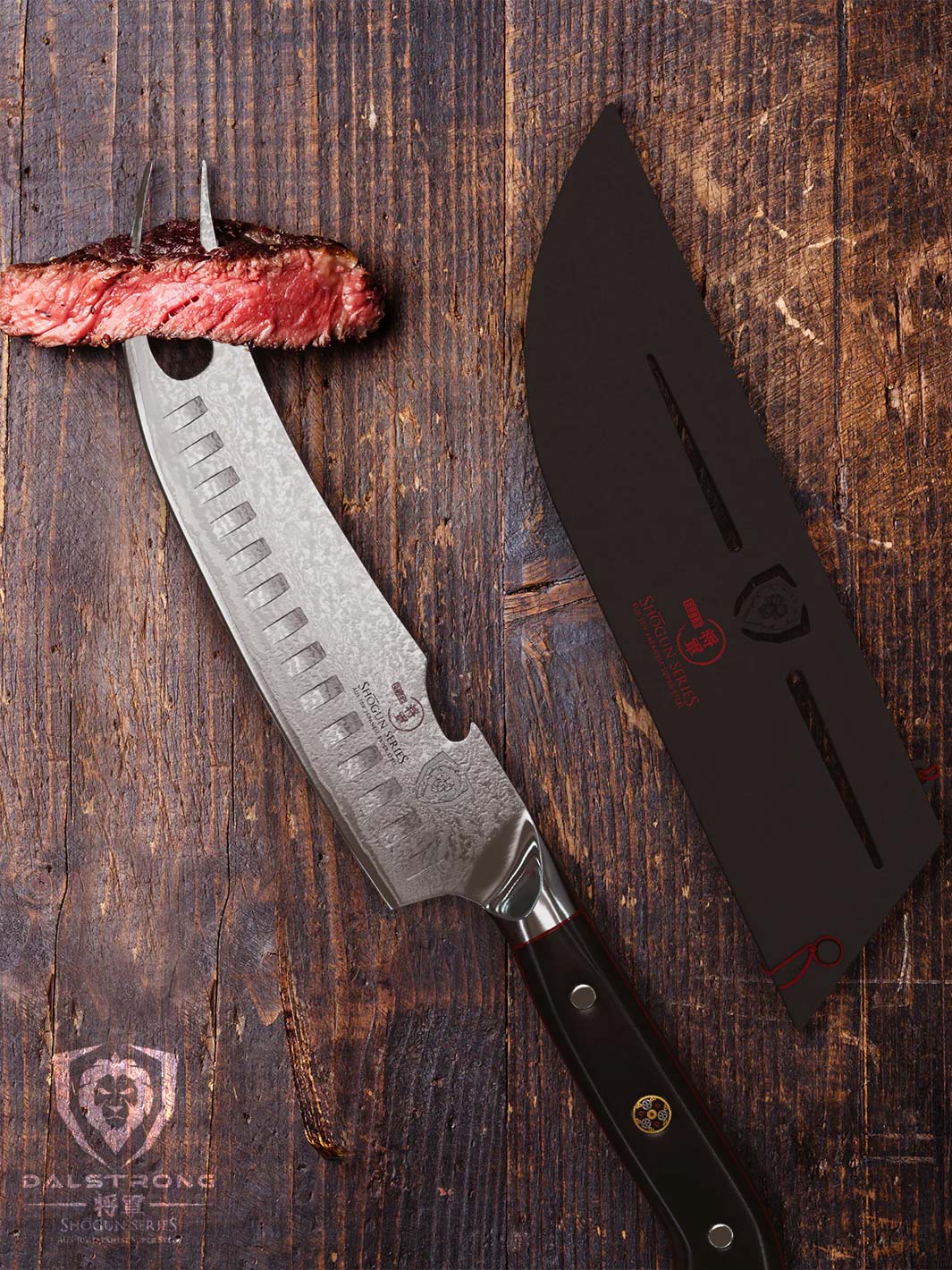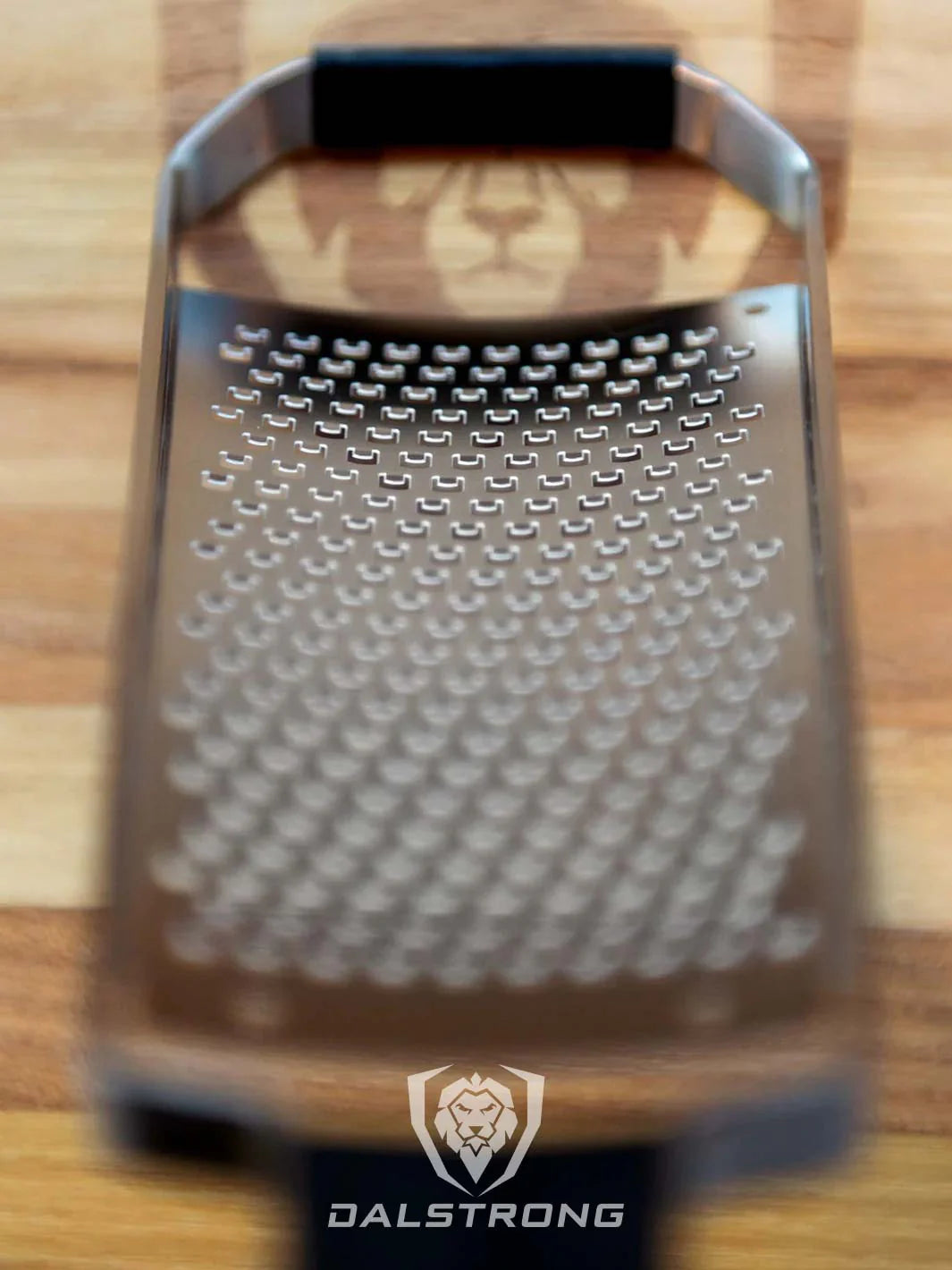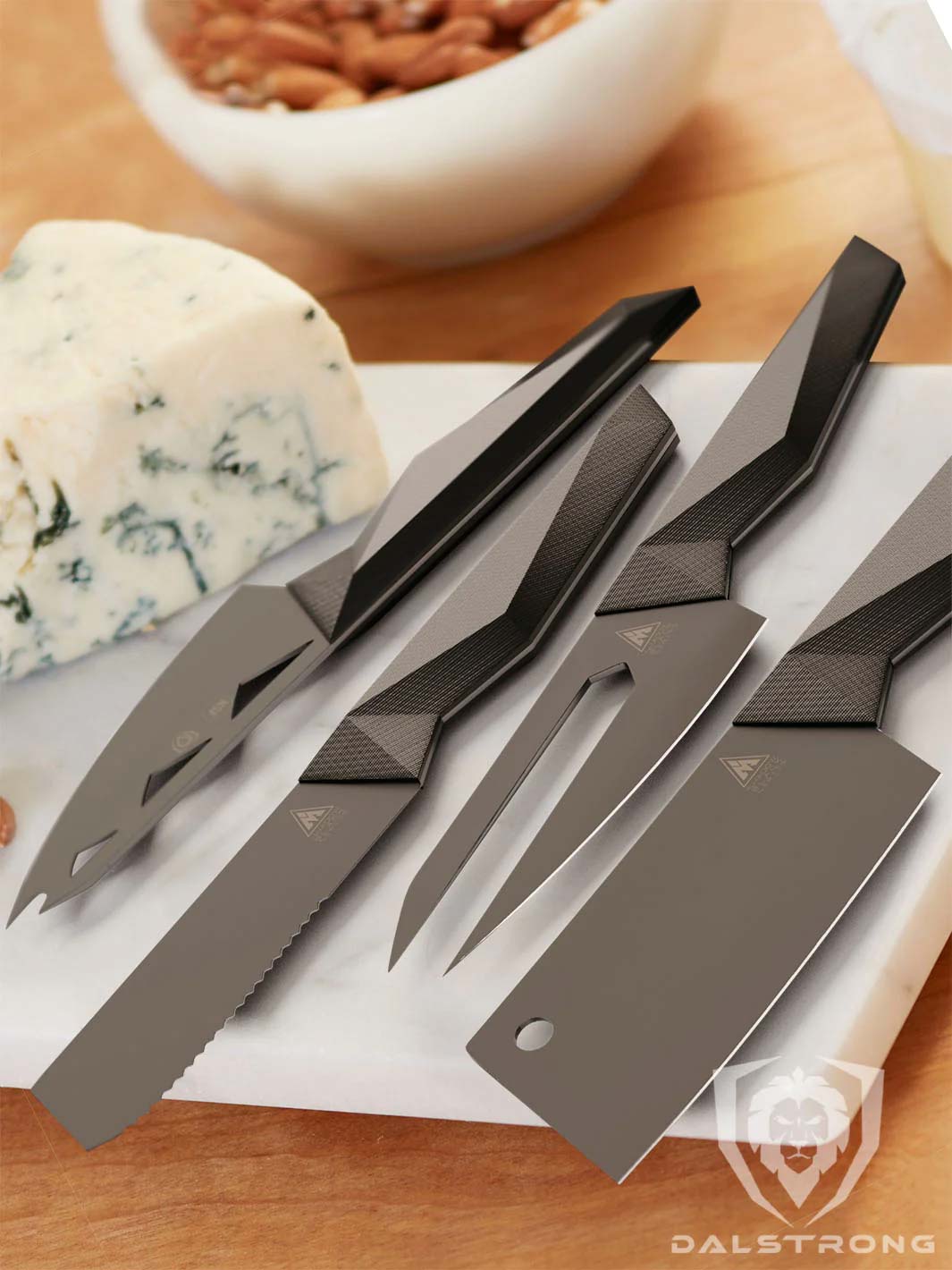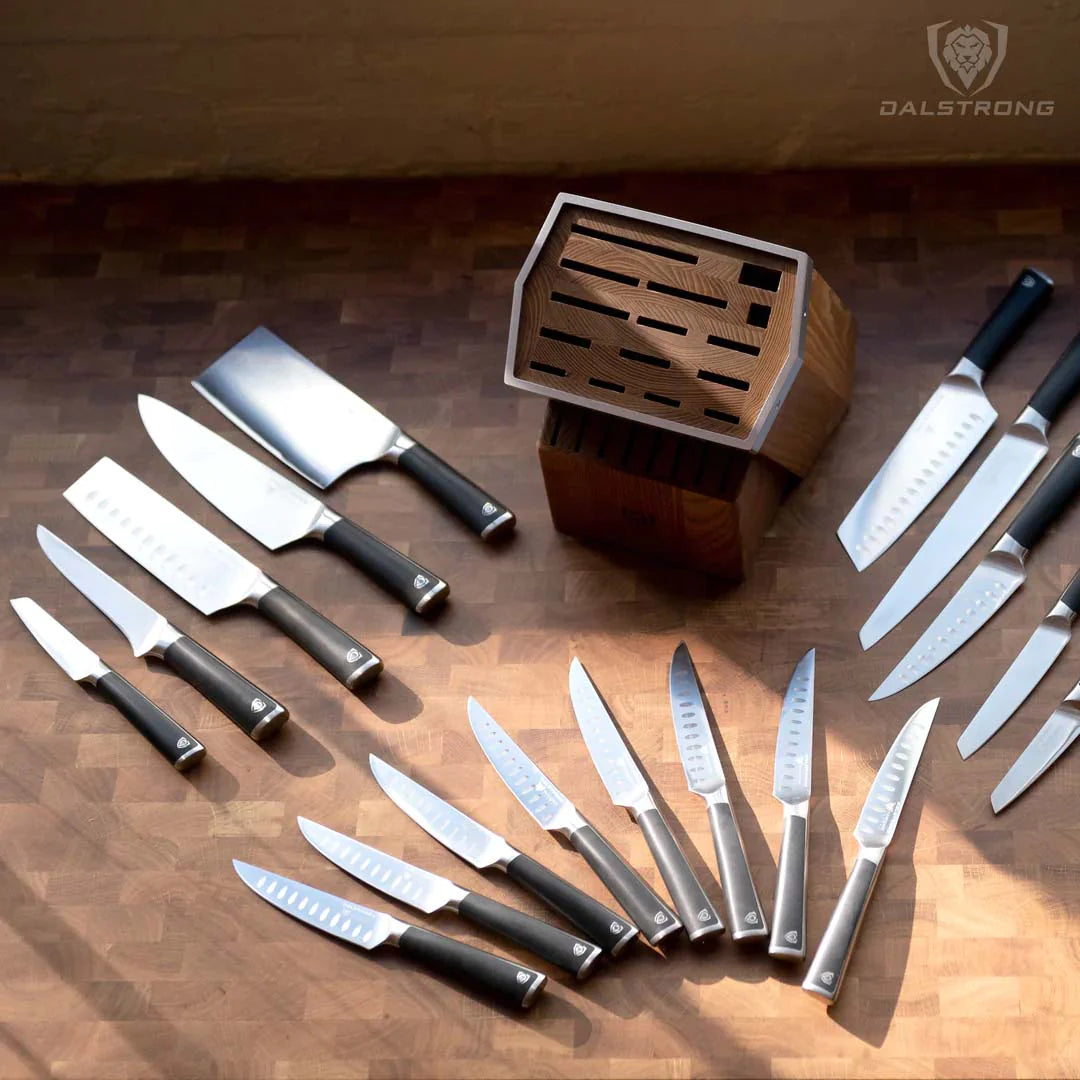Why You Need Frying Pans And Skillets In Your Kitchen
 The Avalon Series 9” Frying Pan and Skillet
The Avalon Series 9” Frying Pan and Skillet
Skillets or frying pans? How are they different? Which do you need? Fret not, folks. I’m here to answer all these questions. While both are famous pieces of cookware that belong in your kitchen, there are certain cooking tasks where one would be more convenient to use than the other. In this blog, we’ll be exploring all of them in more detail. Let’s dive right into it!
1. The Difference Between Fry Pans And Skillets
A frying pan is essentially a cooking pan that is round, sloped, and angular to achieve crispiness on the edges of certain foods such as meat and vegetables. They’re also used for easy cooking or where you need to constantly add more ingredients and shake, flip, or turn the food.A skillet is deeper than a fry pan and is perfect if you want the qualities of a cast iron skillet with nonstick coating and extra volume in comparison to a frying pan. Skillets are great for cooking delicate foods like eggs and fish.
2. When You Should Use Frying Pans
 12" ETERNA Non-Stick Frying Pan & Skillet - The Oberon Series
12" ETERNA Non-Stick Frying Pan & Skillet - The Oberon Series
A frying pan is also used as an omelete pan or to make a fried egg. There are various types of frying pans, for example, ceramic frying pans, deep frying pans, and nonstick frying pans. The cooking surface on frying pans or deep frying pans heats up faster than a sauté pan, so it’s ideal for pan searing cutlets, vegetables, and seafood. If you own a deep frying pan, you can cook some pan sauces or stocks, too.
If you own a 10inch fry pan, you get about 8 inches of cooking surface.
Some Setbacks Of Traditional Frying Pans
A fry pan with lid is rare! Yep, most frying pans don’t come with lids which is a letdown, as it automatically limits the number of foods you can cook. Frying pans made with aluminum aren’t induction cooktop friendly either.
Frying pans also work best on medium heat, since there is always the risk of the disc falling off from the bottom which can cause serious injuries. The cookware materials that form the disc at the bottom of frying pans are not induction compatible, either. Saute pans, fry pans, and saucepans are also losing popularity as they aren’t as versatile as the cookware sets available today, such as skillets or woks.
Things To Remember Before Purchasing A Frying Pan
Cooking on fry pans also requires extra attention as food is more at risk to burn or overcook as the heat distribution isn’t the best, so there are hot spots you need to look out for. Unless you’re using the nonstick kind, it is a chore to clean up the cooking surface as most of the time as there will be stubborn, stuck-on food particles. You need to use metal scrubbers to clean them which can cause arm or wrist fatigue.
Since fry pans are made with a variety of cookware materials, they aren’t generally oven or dishwasher-safe. What makes the handle dishwasher safe is if it is entirely made with metal. This is also why people try to score cooking pans with stainless steel handles.
Some fry pans aren’t oven-safe either for the same reason. Their biggest disadvantage, however, is the lack of helper handles. Since frying pans heat up quickly, they can become quite hot to touch compared to other cookware like skillets, woks, or stock pots. So, it is quite difficult to maneuver and transfer food from stove tops to a table with just one side handle.
However, if you can find a cooking pan that is dishwasher and oven-safe, has a sturdy and ergonomic handle, and is induction compatible, you should bag it!
3. What Are Nonstick Pans?
10" Frying Pan & Skillet ETERNA Non-Stick | Oberon Series
What makes pans non-stick is the glaze on the cooking surface. Nonstick frying pans are round like cast iron skillets and deep like saute pans! This makes them easier to clean and maintain. Nonstick deep frying pans are great for making breakfast foods like bacon, fried eggs, and pancakes, too. They’re also great for pan searing without the struggle of meats like chicken pieces sticking to the pan.
Some Setbacks Of Traditional Nonstick Frying Pans
While nonstick pans are great, they do have a couple of downsides. Frying pans can chip and flake since they have a brittle surface – Which is why nonstick skillets are a great alternative. Frying pans are not suitable for very high temperatures as they start to warp and emit toxins and chemicals into the food.
4. When You Should Use Skillets
A skillet is perfect if you want the qualities of a cast iron skillet with nonstick coating, extra volume, and depth in comparison to a frying pan. Skillets are great for cooking delicate foods like eggs and fish. In fact, skillets can help you make stir fried vegetables too, but a healthier version, as you won’t have to grease the cooking surface with butter or oil. Nonstick skillets in general are great for making any kind of stir fry food.Skillets are great for sauteing and stir frying food. Since they’re light in weight, they’re perfect to shape, turn, and flip foods without spilling them outside the cooking surface, thanks to their sloped sides. A hybrid of fry pans and skillets is excellent for cooking just about any food – We’ll get into more detail on this in a little bit!
If you own a 12inch skillet, you get about 10 inches of cooking surface.
5. What Do I Look For In A Cooking Pan?
9" Skillet Frying Pan - Hammered Finish - Black - The Avalon Series
Material
Stainless Steel Cookware
Stainless steel is the go-to pick for most of us, as stainless steel cookware is generally recognized as safe, stain-resistant, and, most importantly, durable.
Stainless steel fry pans and stainless steel skillets are always in demand because they heat up instantly, which decreases cooking time, are light in weight, clean easily, and are low in maintenance. If you’ve got an induction cooktop, you can use your cooking pan on it, as long as the base of your pan is made with stainless steel, too!
Tri-Ply and 5-Ply Cookware
A fully clad 5-ply or tri ply stainless steel set is more versatile and safe since it has three layers of stain-resistant aluminum. This helps in achieving the perfect level of heat distribution, too. Ultimately, it minimizes cooking time.
Copper Cookware
Copper cookware is on the higher end of price but is also used a lot more today by home cooks and professional chefs for a variety of reasons. Dalstrong’s copper fry pans and skillets are highly durable and lined with stainless steel, which is crucial to preventing copper particles from leaching into your food over time. These cooking pans are thicker in build, which is excellent since they can hold onto your food's flavor, consistency, and color.
Aluminum Cookware
Aluminum cookware sets are quite affordable. This is the most affordable type of cookware widely available. While they offer excellent heat conductivity, they don’t provide the proper heat distribution.
I suggest anodized aluminum as they are stain and scratch-resistant to acidic foods, so you can cook fish, eggs, and acidic foods in it, too. These cooking pans offer a decent level of heat distribution.
The cookware materials used in aluminum cooking pans allow them to cool down much quicker than those made with other materials, though. They’re also as light as stainless steel cookware, so that’s a bonus.
Ceramic Cookware
The best part about a ceramic fry pan is that it is dishwasher friendly, easy to maintain, and built for durability. Cooking pans, especially ceramic nonstick pans are lighter than dutch ovens and cast iron skillets, which should give you an idea about their weight and depth.
However, ceramic cookware can be easily chipped or incompatible with a dishwasher anymore if damaged and not maintained well. Coated in porcelain enamel, these pans are made with high-quality carbon steel, too.
Non-Stick Cookware
We all love nonstick pans! Remember, the best nonstick cookware set will conduct heat tremendously since it is made with aluminum. The goal is for nonstick cookware to resist burnt or charred food from sticking to the rim of your cookware sets. However, you should keep in mind that using nonstick pans at a high temperature will damage any stainless steel material added to them.
Size
Fry Pans
Since a frying pan is more angular than saucepans or sauté pans. The slope allows food to evenly cook while maintaining its heat distribution qualities. 10-inch fry pans are a good place to start if you’re a novice.
Skillets
Contrary to fry pans, skillets have slanted sides that help you achieve a rustic tinge to your foods. A 12-inch skillet would be a good place to start if you’re purchasing a skillet for the first time.
Handles
Riveted Handles
Safe skillets are those that have riveted handles! These handles are created to last a lifetime and are placed between two hard pieces of metal – Usually aluminum or stainless steel. If the handles are beginning to loosen, all you need is a screwdriver to tighten them, which is something you can’t do with welded handles.
Welded Handles
Welded handles are made with stainless steel and are often found on thick pieces of cookware. Welded handles don’t rust and can be cleaned easily, which makes the overall maintenance of cooking pans significantly easy.
6. Dalstrong Skillets You Need In Your Kitchen
1. 10" Frying Pan & Skillet ETERNA Non-Stick | Oberon Series
This nonstick frying pan and skillet hybrids are the talk of the town for all the right reasons! They’re ideal to store leftovers or large batches of food. This skillet has a 10” inch cooking surface and has a 3-ply aluminum core. You can pair this skillet with Dalstrong’s cookware set and channel your inner Dalstrong Pro.
Pros:
- This skillet has excellent heat distribution.
- The glass lid helps prevent rattling and spills.
- The vented hole on the glass lid acts as a pressure release.
Cons:
- This skillet could be intimidating if you’re just stepping into the culinary world.
- If you live by yourself, you may not need a skillet as big as this, so you might want to check the smaller one from the same series.
2. 10" Frying Pan & Skillet Hammered Finish Black | Avalon Series
This skillet pan is another one of Dalstrong’s bestsellers. It is made with 18/10 stainless steel and 5-ply copper forged foundation. Function truly meets form with this frying pan and skillet from the Avalon series. Perfect for making pan sauces and pan searing chicken pieces.
Pros:
- Excellent conductivity and it heats up 5x faster and better than Iron.
- Thick layers of smudge-free aluminum for maximal heat retention.
- Vented hole to prevent spills and warping of your cookware that also acts as a pressure release.
Cons:
- If you’re one for individual pieces of cookware, I suggest the 10-inch frying pan.
- There is a higher price tag for this hybrid but is well worth the price if you know your way around the kitchen.
3. 12" Frying Pan & Skillet Hammered Finish Black | Avalon Series
Looking for a larger skillet to stir fry a large batch of veggies and meat for your guests? Then, this 12-inch skillet with a 5-ply copper forged foundation is perfect for you! It is designed to preserve taste, nutritional qualities, and color.
Pros:
- A 5-Ply Copper Forged Foundation to protect the cookware set from staining and warping.
- Equipped with a glass lid to lock in heat and moisture.
- A side stainless steel handle for a sturdy and firm grip.
Cons:
- While striking in its appearance, this frying pan could be on the higher end of the price range for some folks.
- Some might prefer the traditional route and opt for a classic silver finish stainless steel look like this one from the Avalon Series.
4. 9" Skillet Frying Pan - Hammered Finish - Black - The Avalon Series
Safe skillets are those that are made with non-hypoallergenic materials that are free of toxins. This 9-inch skillet is the perfect size if you’re cooking for 1-3 people. Enjoy Dalstrong’s limited lifetime warranty on this skillet with 5-ply copper forged foundation!
Pros:
- Ultra-strong thickness of 2.5mm to prevent dents and warps.
- Built to withstand high temperatures of heat.
Cons:
- If you’re on the lookout for a larger skillet, I suggest this 10" Skillet from the Avalon Series.
- Looking for a nonstick skillet, instead? Check this 9" Non-Stick Skillet from the Oberon Series.
5. 12" Frying Pan & Skillet ETERNA Non-stick | Oberon Series
This 12-inch skillet has a nonstick coating which is perfect to simmer broths, soups, and your favorite pan sauces around the year. This 3-ply aluminum core is fused with added layers of 18/10 stainless steel for durability.
Pros:
- Impeccable heat distribution and conductivity to cook food evenly.
- Oven and broiler safe up to 500 degrees F.
Cons:
- Need a smaller skillet? The Oberon 10" Non-stick Skillet could be what you’re looking for!
- You may prefer a skillet without a nonstick coating for all the pan seared goodness. We’ve got you covered with our Oberon 12" Skillet.
7. Frequently Asked Questions
Which is the best frying pan to use?
A frying pan and skillet hybrid is ideal to use for making pan sauces or stir frying meat!
What is a frying pan used for?
A frying pan is used for achieving crispiness on the edges of certain foods such as chicken pieces or vegetables.
What is a frying pan also called?
A frying pan is also called a skillet! However, skillets are slightly wider and deeper and have a larger cooking surface, which is why they’re every home and professional chef’s choice!
What is the difference between a pan and a skillet?
A frying pan is round, sloped, and angular, whereas a skillet has more volume and a greater depth.








































































































































































































